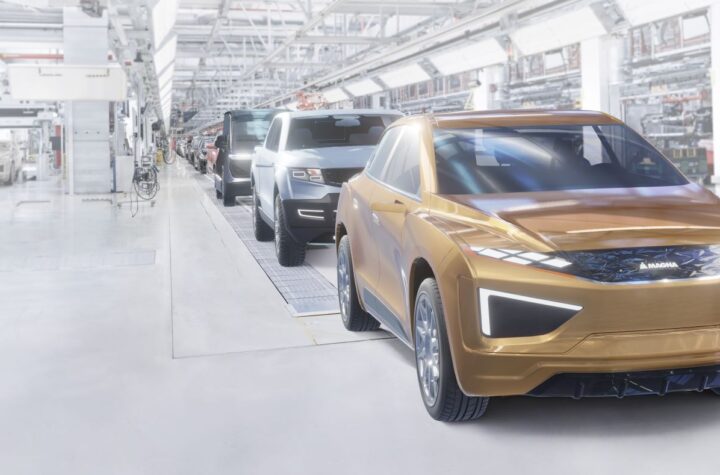
 Is there a viable (meaning profitable) future for hybrid electric vehicles (HEVs)?
Is there a viable (meaning profitable) future for hybrid electric vehicles (HEVs)?
Honda’s two-seat Insight was first to hit U.S. shores in 1999. Except for GM’s fullelectric EV1, which was mercifully euthanized that same year, it was (and is) the most energyefficient production automobile on the planet. Toyota’s Prius, a less efficient but more powerful and practical small sedan that debuted in Japan in 1997, arrived in 2000.
Honda countered with its Civic Hybrid in 2002, and Toyota trumped that last October with its Gen II Prius, powered by its thirdgeneration Hybrid Synergy Drive (HSD).
Claiming 12,000 advance orders and 10K deliveries in the first six weeks, Toyota upped its ’04 U.S. Prius ante from 36K to 47K — still less than 0.28 percent of a 17 million vehicle year. Honda, meanwhile, through 2003 had moved a total of 47K U.S. hybrids, 75 percent of them Civics.
Despite their high efficiency, low emissions and (heavily subsidized) low prices, these pioneer HEVs have been handicapped here as small cars in a large-vehicle market and by concerns over long term durability, used-vehicle value and scary potential costs of replacement motors, controllers and battery packs once the warranty is done.
More significant than Toyota’s larger, more powerful and more efficient ’04 Prius, however, are its ’05 Toyota Highlander and Lexus RX 400h crossover SUV hybrids. These will demonstrate one key way in which the company intends to make a business of HEVs — by positioning them at the tops of their ranges with higher content, performance and efficiency vs. conventional counterparts. Americans are typically eager to pay for luxury, features, performance and prestige, but not yet for “greenness.”
Honda will soon offer an Accord HEV with higher performance than its 240-hp V-6 model.
GM and Ford are about to launch hybrid trucks and SUVs promising substantial fuel savings with little or no sacrifice in performance or capability. And Toyota will market its HSD to Nissan and others who choose not to invest their own billions in HEV development — exactly the business case GM envisioned for its once industry-leading battery EV technology.
There are good reasons why most automakers have been reluctant to hop headlong onto the HEV bandwagon. One is weight — batteries, motors, controllers and wiring are heavy. Another is packaging — all that extra componentry takes up valuable space. Another is the daunting development challenge of seamlessly blending ICE and electric torque, friction and regenerative braking, engine stops and starts, electric power steering and HVAC.
But the giant skeleton in every HEV’s closet is COST. Anyone who has any idea what these dualpowertrain components really cost will know that Toyota is stretching credibility to claim that even the simpler Echo-based Gen I Prius was profitable at its $20K price. By contrast, the ’04 is a unique, high-content car on a dedicated platform, and its nickel-metal hydride (NiMH) battery pack probably costs a quarter of its (still) $20K base price.
By selling small volumes of $40K HEVs at half price, Toyota and Honda have reaped huge PR benefits while concealing the actual cost of hybrid technology from customers and, more importantly, from technologically ignorant media and environmental advocates. But how long will they continue heavy subsidies as they drive HEV content, capabilities and volumes upward? The coming Lexus RX 400h is so packed with expensive hardware and software, including a second electric motor driving the rear axle in all-wheeldrive versions, that it will have to carry either a very hefty sticker or a substantial subsidy, or both, to sell even as the top-of-the-line RX model.
GM’s EV1 was cute, quick and fun to drive. It could manage 70-90 miles on the energy equivalent of a half-gallon of gas in its 1200-lb. leadacid battery pack, and nearly twice that with a much more expensive NiMH pack. But GM’s earnest intent to make and lead a viable business in battery electrics went south, along with its half-billion dollar investment, when the needed breakthrough battery never materialized.
Toyota’s intent to make and lead a viable business in HEVs seems more realizable. But it will not succeed until the capability and desirability — not just the efficiency — of HEVs can overcome their weight, packaging, complexity and ultra-high cost disadvantages.
Gary Witzenburg, a former advanced technology engineering manager and part-time racing driver, is a widely published auto writer and Editor at Large of Automotive Industries.













More Stories
From Gasoline Powered Cars To Electric Vehicles | Electric Moped Bike A Best Alternative
Rubbernecking: A Silly Reason for Car Accidents
Flexible Magna Manufacturing Solutions: The Key to Success in the Automotive Industry